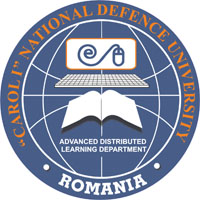E-LEARNING APPLICATION FOR TEACHING KNITTING ENGINEERING
E-LEARNING APPLICATION FOR TEACHING KNITTING ENGINEERING
Author(s): Mariana URSACHE, Dorin Savin IONESI, Luminiţa CiobanuSubject(s): Education
Published by: Carol I National Defence University Publishing House
Keywords: knitting elements; 3D geometry; Sketchup
Summary/Abstract: Knitting engineering is a complex subject and many times the visual interactive teaching aids facilitate the understanding process. When presenting the knitting elements specific to a knitting machine - needles, sinkers, feeders and other elements - it is important to define their shape and position in the machine. Many times, such information is presented in 2D drawings and images that are limited with regard to the 3D geometry. The paper presents an interactive laboratory regarding the knitting elements for a flat machine. The innovative approach refers to the 3D presentation of the flat knitting machine and its elements, individually and on the machine. The knitting elements are drawn using Sketchup, a program that allows creating 3D models in a realistic manner. The program is designed to produce complex three dimensional shapes starting with a 2D section. The shapes can be further modified by using specific instruments or dedicated plugins such as Curviloft and Shape bender. The program also offers the possibility of animating a presentation, changing the angle for visualisation. If complex animation is desired, i.e. to show linear or circular movements (as it is the case for knitting elements), the Sketchy Physics plugin can be used. The students visualise the knitting elements separately, defining their 3D geometry and then they can identify the same elements on the machine. The 3D geometry means that all elements can be seen from different angles so that their structure is well understood. The application can also be used for testing, as the students can identify and position themselves the knitting elements. Another advantage is that they can use such application at home, without the need to see the machine directly.
Journal: Conference proceedings of »eLearning and Software for Education« (eLSE)
- Issue Year: 11/2015
- Issue No: 03
- Page Range: 538-541
- Page Count: 4

